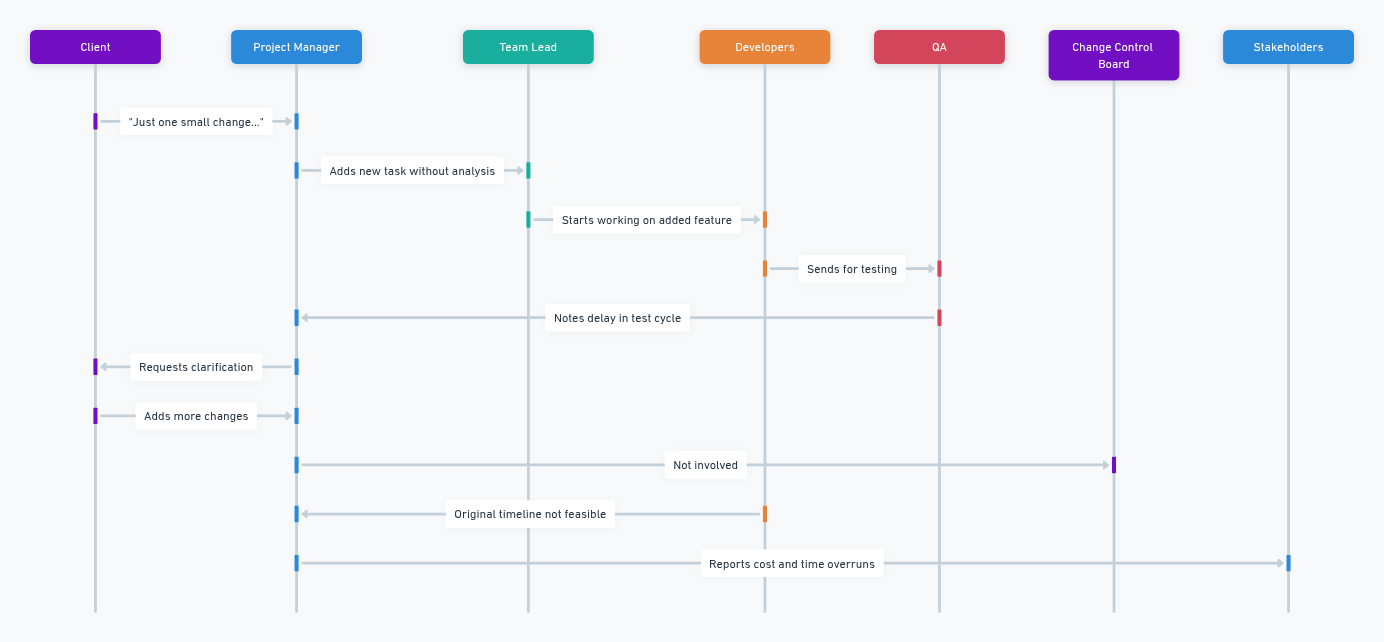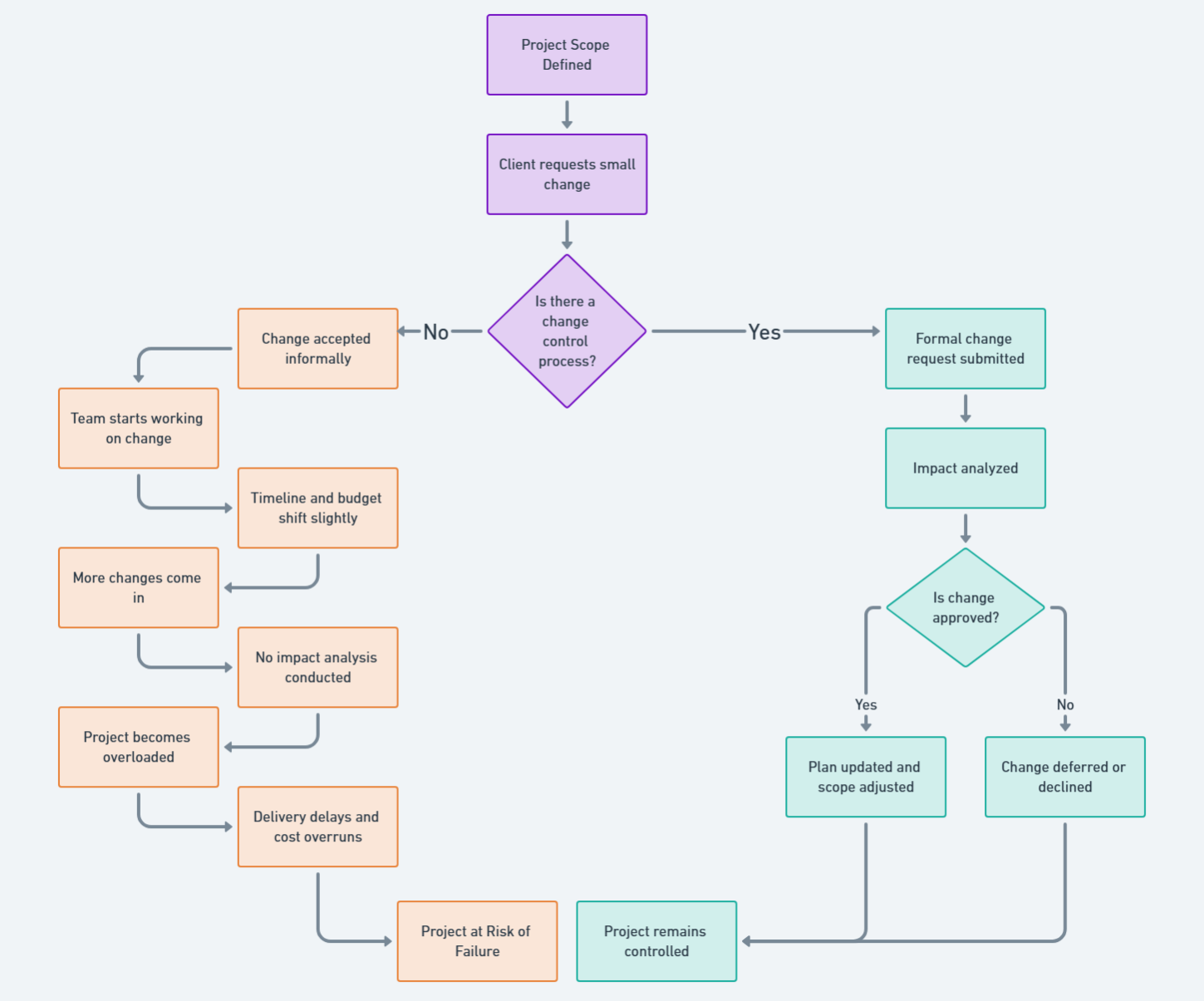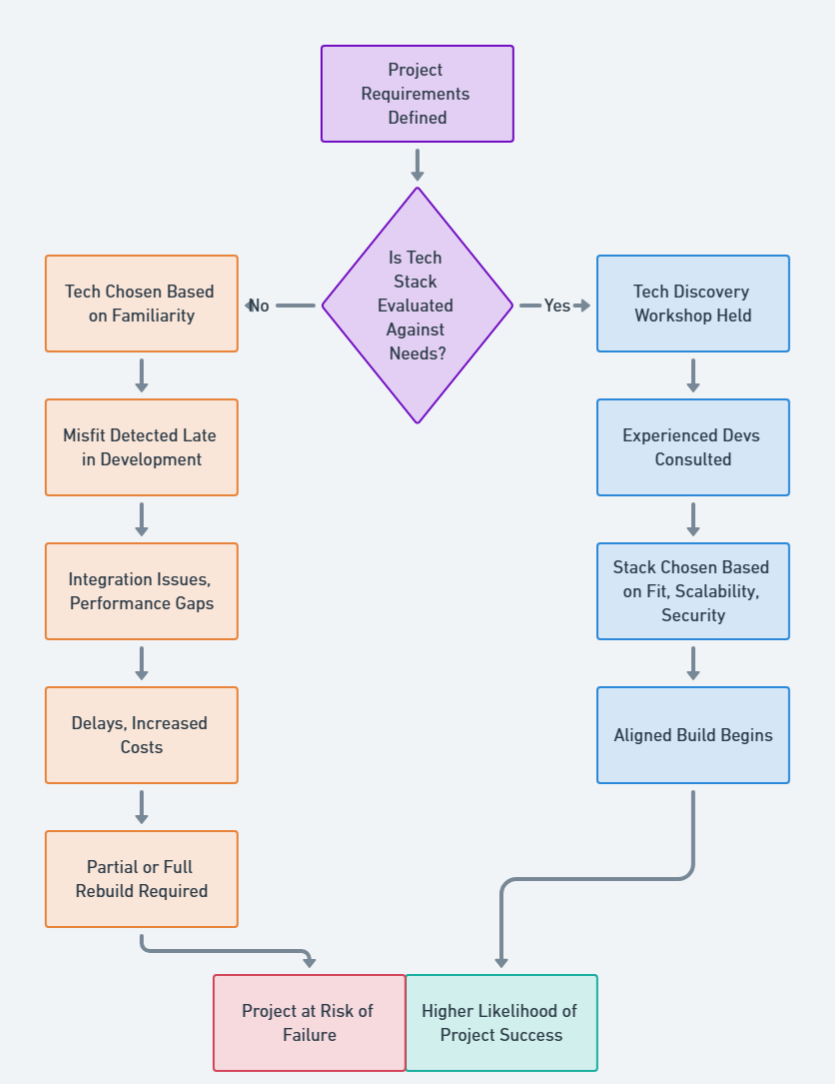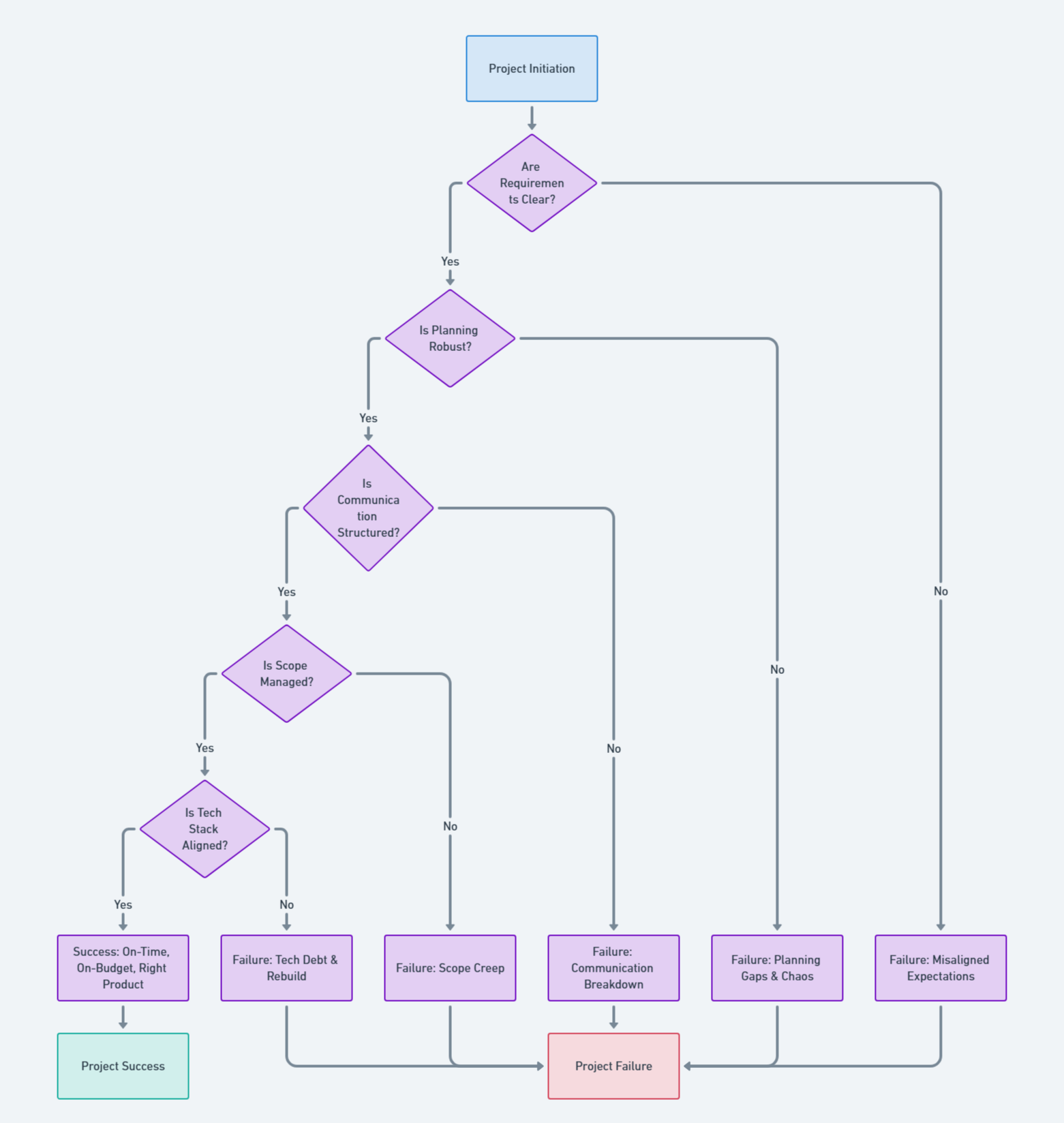
Why do software development projects fail? Real challenges and how to solve them.
Delivering successful software isn’t just a competitive edge, it’s mission-critical. But here’s the hard truth: the road to successful delivery is still full of potholes. Stats from Boston Consulting Group and McKinsey show that 70% of digital transformation projects don’t make it to the finish line. Dig in deeper and you’ll find that nearly half (49%) of these failures boil down to a breakdown in gathering and managing requirements according to Info-Tech Research Group.
These aren’t just numbers. They represent real consequences: wasted budgets, missed opportunities, loss of momentum, and reputational damage. At division5, we believe failure isn’t inevitable. With clarity on the root causes and a proactive mindset, companies can absolutely flip the odds in their favor.
Why Projects Derail and What You Can Do About It

To truly address the challenges of software development, we need to move beyond the surface and look under the hood. Here’s a closer look at the common failure points, and how to solve them with practical, proven approaches.
1. The Requirements Paradox: Nailing Down What Matters
The Problem: Requirements are the foundation of any project, but unclear or poorly defined ones are the most common reason things go off track. The Chaos Report by The Standish Group highlights that projects lacking clarity in requirements often fail. And we’re talking failure rates over 70%. The issue isn’t just about documenting what the software should do; it’s about aligning business needs with the technical build. If there’s a disconnect, developers end up building the wrong thing, or the right thing in the wrong way.
Root Causes:
- Poor communication between business and technical teams
- Low engagement from key stakeholders
- Gaps in identifying functional, non-functional, and user requirements
- Weak requirements management processes and tools
How to Fix It:
- Hire sharp Business Analysts who get your industry and can speak both tech and business fluently
- Build a strong requirements-gathering process:
- Do deep-dive stakeholder interviews with open-ended questions
- Run collaborative JAD (Joint Application Development) sessions to define needs together
- Write detailed user stories and use cases to bring workflows to life
- Use wireframes and clickable prototypes to validate understanding
- Put robust requirements management in place:
- Use tools like Jira, Azure DevOps, or Jama Connect
- Set up a formal change control process for evaluating scope updates
- Review and refine requirements regularly to keep pace with the business
2. The Planning Minefield: Getting the Roadmap Right
The Problem: When projects skip detailed planning, chaos follows. Missed deadlines, bloated budgets, unclear priorities: all symptoms of weak planning. According to PMI’s “Pulse of the Profession,” well-planned projects are 35% more likely to succeed. But too often, planning is rushed, leaving teams without a real blueprint to follow.
Root Causes:
- Undefined or vague project goals
- Time and budget estimates pulled from thin air
- Risks not identified or mitigated early
- Weak collaboration during the planning phase
How to Fix It:
- Define crystal-clear objectives and KPIs upfront
- Develop a full project plan that includes:
- Scope definition (what’s in, what’s out)
- A work breakdown structure (WBS) to break it into doable tasks
- A timeline and milestone schedule
- Budget forecasts
- A risk register with mitigation plans
- A communication roadmap
- Choose the right delivery model:
- Agile for flexibility and iteration
- Waterfall for fixed-scope, predictable builds
- Hybrid to mix and match based on needs
- Use tools like Jira, Asana, MS Project, or Trello to manage progress and keep everyone aligned
3. The Communication Chasm: Building Bridges Across Teams

The Problem: Communication breakdowns are silent killers. Poor communication can increase failure rates by up to 50%, according to industry research. It’s not just about sending messages, it’s about being understood, aligned, and responsive.
Root Causes:
- No defined communication protocols
- Cross-cultural or language gaps
- Poor listening or unclear messaging
- Underuse of tools or fragmented tech stacks
How to Fix It:
- Define preferred channels (Slack for quick chats, Zoom for deep dives, Email for formal recaps, etc.)
- Set communication norms: when to respond, how to document, how to escalate
- Build transparency:
- Make it safe for team members to speak up
- Celebrate honest feedback and open questions
- Train teams on active listening, constructive feedback, and remote collaboration
- Use tools like Microsoft Teams, Slack, and Confluence to centralize communication
4. Scope Creep: The Quiet Killer

The Problem: Scope creep rarely starts with a bang. It sneaks in through small “just one more thing” requests. Left unmanaged, it adds up fast, eating away at timelines, budgets, and focus. Some studies estimate scope creep can inflate project costs by 20-50%.
Root Causes:
- No clear scope document
- Inconsistent handling of change requests
- Vague stakeholder expectations
- Little to no impact analysis for new feature asks
How to Fix It:
- Start with a bulletproof scope statement. Define what’s in, what’s out.
- Set up a change control board:
- Require formal change requests
- Evaluate every change’s impact on time, cost, and quality
- Keep all stakeholders in the loop about approved changes
- Prioritize ruthlessly:
- Build core features first
- Park “nice to haves” for future phases
5. Tech Stack Misalignment: The Foundation Problem

The Problem: Choosing the wrong technology stack is like laying a shaky foundation. Even great code won’t save a project if the platform isn’t scalable, secure, or future-proof. Bad calls here can drive up costs, create integration headaches, or force a rebuild.
Root Causes:
- Lack of clarity on project needs
- Choosing tech based on familiarity rather than fit
- No long-term view on tech trends or support
- Incomplete vetting of options
How to Fix It:
- Do a tech discovery workshop:
- Clarify performance, integration, security, and scalability needs
- Research all viable options, including pros/cons
- Bring in experienced dev leads to weigh in
- Consider future-proofing:
- Go for tech with strong community support and ecosystem longevity
- Don’t ignore the cost of licenses, hosting, and dev talent availability
- Where possible, lean into open-source tech for flexibility and community strength
- Just make sure it’s secure and actively maintained
Software Project Success vs Failure Path

division5: Your Development Partner That Gets It
At division5, we know these challenges because we’ve tackled them head-on, project after project. Our nearshore teams are handpicked not just for their technical skills but for their ability to integrate into your workflow, communicate clearly, and build the right thing the right way.
From senior developers and project managers to business analysts and QA pros, we build teams that hit the ground running and grow with you. No fluff. Just full transparency, strong delivery, and smart solutions.
Frequently Asked Questions (FAQs): Why Software Projects Fail
Wrapping It Up: Strategy First, Always
Software is hard, but success isn’t complicated when you focus on the fundamentals: clear requirements, solid planning, consistent communication, thoughtful risk management, and a tech stack that fits.
When you approach development strategically—and with the right partners in place—your projects can move from risky to reliable.
Want to talk about how we can help make that happen? Visit division5.co or get in touch for a tailored consultation.